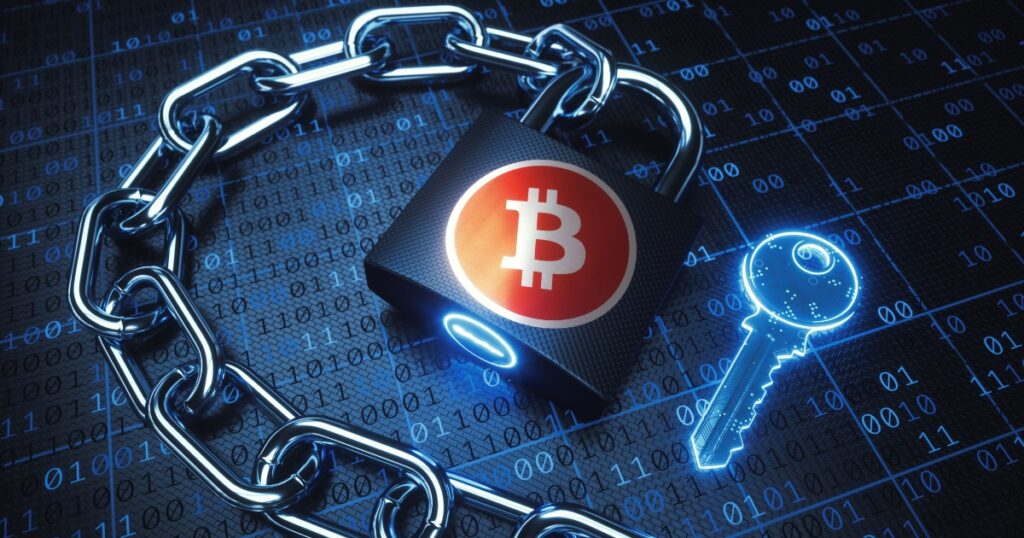The main intention of using blockchain is to allow people to share valuable data securely. As blockchains store data using ultra-modern software and advanced math, it is extremely difficult for attackers to manipulate. Many cryptocurrency investors often confuse the hacking of a blockchain with that of a digital exchange. Though centralized digital exchanges get hacked every now and then, the case is rare when it comes to decentralized blockchains. In this blog, you will learn more about blockchain and how secure it is.
How Can a Blockchain Withstand Hacking?
There are two top reasons why a blockchain can withstand hacking, they are as follows:
- Decentralized/Open-Source Protocols
Blockchains behind most cryptocurrencies are open-source, peer to peer, and public. This allows everyone with proper knowledge and equipment to understand the technical details. This is essential for transparency and to attract buyers. In a blockchain, you will find multiple technical mechanisms working together for a common goal.
For instance, proof of stake (PoS) and proof of work (PoW) systems protect the network by lowering the likelihood of cyberattacks from hackers. A blockchain’s distributed nature suggests that the network is spread among several computers called nodes. This means that there is no single point of failure.
The architecture of a blockchain decides how the nodes cooperate in verifying transactions before it commits to a protocol. When it comes to Bitcoin and other PoW systems like Bitcoin cash, around 51% of the nodes must agree to the transactions pre commitment.
- The Hashing Algorithm
Every transaction is a block; the connection of various transactions creates a blockchain. Especially, a block has cryptographic features that distinguishes it. You can find the specifics in the hash mechanism of a network. The Bitcoin blockchain, for instance, makes use of the double SHA-256 hash function, which hashes and compresses transaction data into a 256-bit hash.
Making it difficult to reverse the hashed information renders a transaction rigid. Every block in a chain carries particular information from the one before it. Thus, even if a hostile actor reverse-engineers the hash, the resulting block would be out of sync with the rest of the blocks since it would have a different hash output, thus forcing the system to reject it.
51% Attacks Are Unlikely
One thing to note is that the longer a blockchain exists and the more users it attracts, the lower the chances to suffer a 51% attack. This is mainly due to its growing harsh power. It is important to know that for a hacker to reverse engineer a transaction’s hash, they must have control over 51% of a blockchain’s power.
At some point this gets absolutely costly. Given the scale of existing blockchains like Ethereum and Bitcoin, such a situation is practically unlikely. It is very hard for hackers to have control over blockchains.
Does Blockchain Security resemble Cybersecurity?
Blockchain security can guard a blockchain network against cybercrime and threat agent intrusion. Blockchains equally leverage their natural security mechanisms to offer immutability and openness. Generally speaking, cybersecurity addresses the whole safety of data on any system, network, or machine including blockchains from all angles.
Blockchain: A New Cybersecurity Approach
Blockchain offers a unique and improved path towards greater security, which is not friendly for cybercriminals. This kind of an approach helps reduce vulnerabilities, provides stronger encryption, and provides more effective verification of data ownership and integrity. It might even remove the need for having passwords.
The biggest advantage of a blockchain is its way of using a distributed ledger. A distributed public key infrastructure model might lower various risks associated with centrally stored data by eliminating relevant targets. Records of transactions across every node in the network make it tough for attackers to compromise, steal, or tamper with data unless there’s a vulnerability in the platform.
IoT Protection Through Blockchain
Blockchain uses one of the most crucial cybersecurity tools—encryption—even if it has many atypical aspects. Distributed ledger can use public key infrastructure to authenticate devices, secure communication, validate configuration changes, and find private devices in an Internet of Things (IoT) environment. A blockchain system can cover linked thermostats, smart doorbells, security cameras, and other sensitive edge devices by means of encryption and digital signatures. According to a recent Palo Alto Networks analysis, 98% of IoT device traffic was unencrypted and likened to “low-hanging fruit for attackers.”
Furthermore, this technique can be a weapon against DDoS attacks—distributed denial-of- service. You can stop the only point allowing these attacks to succeed via a blockchain-based domain name system (DNS), the mechanism guiding internet traffic. A DDoS attack on one DNS host caused most of the internet to crash in 2016.
Key Benefits of Blockchain
Due to the transparent and fixed nature of blockchain technology, organizations can take advantage of the following:
- Traceability: As blockchain data is fixed, it is best for tracking or tracing items/provenance via complex supply chain.
- Enhanced Security: The encrypted and distributed nature of blockchain indicates that it will be hard for cybercriminals to hack the system. This is a big thing for businesses and IoT security.
- Faster Process Times: Blockchain can speed-up processing times in multi-party scenarios and can provide faster transaction speeds.
- Transparency: The information in blockchains can be viewed by every participant and it cannot be altered. This not only helps build trust but also reduces the risk of fraud.
- Better Efficiency and Return on Investment: Distributed ledgers can provide quick ROI by aiding businesses to create more efficient, leaner, and profitable processes.
- Data Privacy: Though information is verified and added to blockchain via a consensus process, the data itself is transformed into letters and numbers by a hash code. Participants in the network will have no way to translate the information without a key.
- Automation: As blockchain is programmable, it can trigger actions, events, and payments after the conditions are met.
- Lesser Intermediaries: Blockchain is a peer-to-peer network that reduces dependency on some types of third-party intermediaries. This leads to more efficient processes and less opportunities for data entry errors and less transaction fees as well.
Public Versus Private Blockchain Safety
Public blockchains use distributed consensus systems whereby network users may freely join to validate transactions, hence providing security. But decentralisation by itself does not provide security; it also depends on appropriate economic incentives and strong protocol design. As 1000s of independent nodes validate transactions and maintain the network, open participation is leading towards an incredibly robust security paradigm.
Although this openness guarantees that broad attacks are too costly and allows public examination, it also includes the reality that everyone may view all of the transaction data. This can be inappropriate for many corporate operations.
Conversely, private blockchains operate under regulated networks whereby network members are selected ahead of time and must be granted authorisation to engage. This allows the companies using such blockchains to maintain their data private while still utilising the capabilities of the underlying blockchain protocol, such immutable record-keeping and consensus.
Unlike game theory and economic incentives that safeguard public networks, private blockchains concentrate more on conventional access control measures. They depend on the honesty of the members who rather have access.
Detection Systems for Blockchain Attacks
First line of protection against blockchain assaults is network monitoring. By means of continuous monitoring behavior at the network, transaction, and node levels, an analytical system-oriented method can help detect perhaps harmful actor activity on the network. These systems can monitor the unusual concentration of mining power to identify a 51% assault or aberrant transaction flows, therefore suggesting possible ongoing exploitation efforts.
Pre-deployment manual code review and automated methods play a crucial role in preventing vulnerabilities in smart contracts. Advanced auditing systems are designed to detect known vulnerability signatures, logical errors, and potential exploitation paths. These systems also support real-time monitoring of smart contracts. This monitoring helps identify continuous attacks or suspicious behavior patterns that may indicate an ongoing exploit.
By means of sophisticated algorithms, transaction analysis examines blockchain transactions in search of any questionable activity. These systems look at transaction flow, timing trends, wallet interactions to find possible double-spending efforts or money laundering schemes. Such sophisticated detection systems include, among other machine learning models that may identify complex sequences of activities that might be undetectable by conventional rule-based systems.
Node protection tracks node performance and behavior criteria. Investigating network connections, resource use, and consensus participation patterns helps one see indicators of possible eclipse events or attempts at node tampering. Before the leak or corruption of important data, automated methods can find and quarantine compromised nodes.
Blockchain’s Security Level
Designally, blockchains are quite secure: their data is arranged into blocks connected by a cryptographic chain and they use a consensus mechanism—involving some of its members—to distribute information. Blockchain networks, on the other hand, are less safe since more weaknesses to take advantage of abound.
Concluding
By using distributed design, robust encryption, and digital signatures, blockchain provides improved security and digital privacy over conventional internet technologies. Especially in sensitive settings like the Internet of Things, its tamper-resistant ledger offers strong protection. Combined with public key infrastructure and DDoS resilience, blockchain becomes a potent weapon for safeguarding data, devices, and vital internet infrastructure

